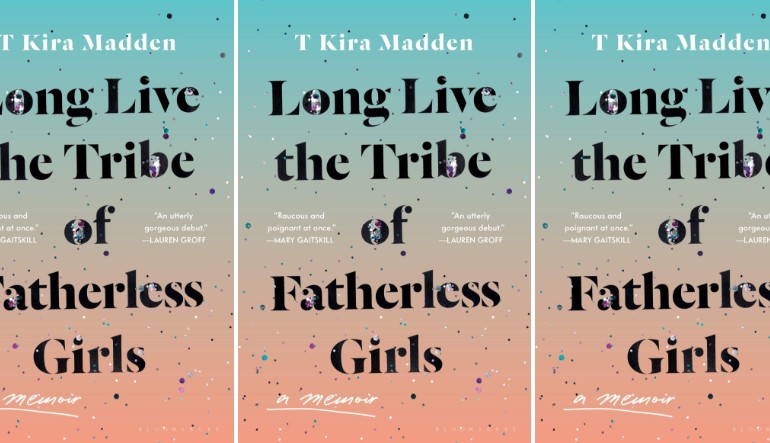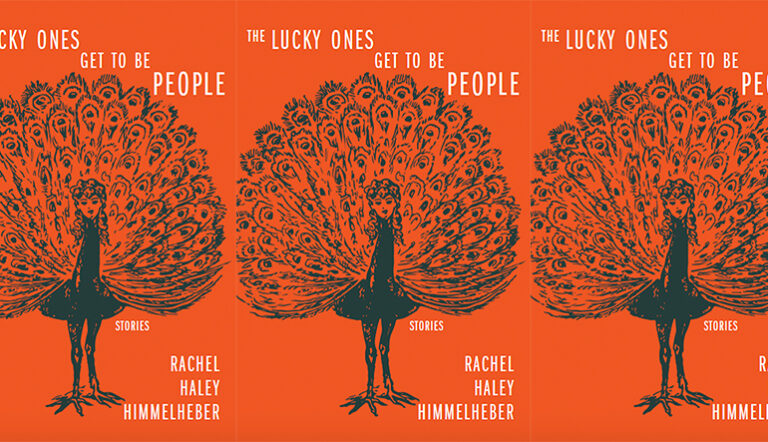“The writer’s toolbox is for everyone”: An Interview with T Kira Madden

T Kira Madden’s raw and lyrical memoir Long Live the Tribe of Fatherless Girls, out today, tells the story of the writer’s dysfunctional, chaotic, isolated, and privileged childhood, as well as her path to healing as an adult. “I wanted love the size of a fist,” Madden writes early on, signaling the kind of desperate desire she both courts and escapes over the course of the book.
Madden was born in Coconut Grove, Florida, where she was raised by her Hawaiian-Chinese single mother and visited, on occasion, by her mysterious shoe-mogul father who had another family. When he left them to marry Madden’s mother, the trio moved to Boca Raton, where she began a life of horse-riding lessons and private schools.
Upon her father’s departure for New York, where he spent a few years trying to get sober while running one of the most well-known shoe brands in the country, Madden stayed put in Boca Raton with her mother, who was battling an addiction to painkillers.
Long Live the Tribe of Fatherless Girls recounts these moves, relationships, and traumas—as well as the experience of growing up queer and biracial among the Florida elite—and fearlessly depicts the cruelty of addiction, assault, and isolation.
Madden, founding editor-in-chief of No Tokens and teacher at Sarah Lawrence College, where she received her MFA, recalls her girlhood with fierce lyricism. Each page renders a complete world, one both painful to watch and fascinating to behold. The memoir, while tragic, is ultimately redemptive—it is a book about growing back from brokenness and finding love after a childhood spent longing for it.
I spoke with Madden about her literary influences, how she approached sharing her work with her family, and how she waded through her painful past.
Ellen O’Connell Whittet: So many of the stories you tell in Long Live the Tribe of Fatherless Girls combine elements of fiction in your retelling of your life. How do you think about genre as you write? Does it ever inhibit you, or do you ignore it completely?
T Kira Madden: I am trying to deprogram myself from separating genres and skill sets into boxes. I think genre is of service to publishers and booksellers and certain realms of organization, but it’s of little use to artists. In every class I teach, we read across genres. We dissect the structure of a poem and use it as a story model; we look at classic tragic and comic form and shape an essay around it. The writer’s toolbox is for everyone, because we all have the same job: to make the art and to make it true. We have to pull off the illusion.
In my “nonfiction” I want to be deploying just as much if not more imagination and world building (yes, imagination; the most exceptionally crafted nonfiction I read always reaches for the unknown and imagined), and I want all of my prose to have the intrinsic musicality and care of the poets.
EOW: From the beginning of the book, we see you as a young girl and teenager in friendships with fatherless girls. Did you consciously structure your memoir around the idea of the “tribe”?
TKM: The book was sold under its current title, but it took me years to warm up to it. I suppose that’s because I didn’t structure the book around any one idea. There was no planning or mapping involved in the generative process; I wrote my way through grief—first about my father, and then my mother, and then friends and lovers and siblings and beauty—and it took other people to really see it, to tell me what notes felt truest. I wrote the book and its ending in real time as new developments occurred, and allowed the story to tell me what it wanted to do and where it wanted to go. Long Live the Tribe of Fatherless Girls was chosen for its triumph and spirit, but I think the book is just as much about mother love and the resilience of women as it is about the presence and absence of men.
EOW: Your piece “The Greeter,” recently published in The Sun, about your mother’s addiction, is an excerpt from this memoir about your mother’s addiction. You mentioned it was the most difficult piece you had to write. How do you tackle writing things about people you’re close to? Do you let them know ahead of time? How does it deepen your relationships to write about them?
TKM: It was the most difficult to write not only because it captures the days that ache most to recall, but because my mother is my best friend, and the love of my life, and to write about her shortcomings and her illness—well, there’s a lot of pressure to do right by her. To render her the exquisite but flawed human she is, and to add something valuable to the often clichéd and sensationalized addiction narratives out there. My mother was the only person who got a say in every page of the book; I needed her permissions, and her blessings, and anything she wanted out would be out. Lucky for me, she was and is stunningly forthcoming about her story, and never asked me to change a thing. It’s certainly helped us love and understand each other in new and sacred ways.
EOW: What kinds of things helped you avoid burnout when writing a memoir? What advice do you have for others who are in the midst of their own profound excavations?
TKM: I think it’s incredibly important to establish the boundaries and practices that feel right to you. In the beginning, I kept searching for answers, asking authors and mentors: “Did you show your family? Did you seek permissions? How much time did you spend with each piece?” And I soon understood that those answers are different for everybody, and they even vary across projects for the same individual.
For me, having a dialogue with my mother and my family and the people who appear in the book was really important. I needed them to read the pages, to feel I’d done right by them. I needed to be reminded that the work is just the work; it’s not real life. For other writers, it’s important to maintain a firm divide, a division which allows for authenticity, and self-care, and even, sometimes, safety.
So much of memoir “burnout” is about other people, not even ourselves, and I really suggest considering the following questions: Who, if anyone, do I want to read the pages in progress? Who, if anyone, do I want reading the final product? For whom will I change things? Whose permissions will I seek (permission is very different from an opinion, or take) What relationships would I never want to sever for the sake of my art? Honor your answers.
EOW: You mention Drew Barrymore’s Little Girl Lost in your own book, and say it was an early favorite. What were other books that contributed to your knowing you had a story to tell? What other books either directly or indirectly influenced your own writing?
TKM: Drew’s book was and is a lifeline book because, in those early years, the years without context or a vocabulary for addiction and family dysfunction, her book was the only proof I had of my own experience. The way I saw it, Drew and I shared a secret, an intimacy and shame no one else could possibly understand. I chose to publish my book with the hope that it can and will “‘feed the lake”’ of addiction narratives, and help other people—especially young people—feel less alone inside of it. As for others: Grace Paley, Heather Lewis, and, Lynda Barry are my northern stars. Paley for her activism and the capacious heart of her work, Lewis for her daggers of truth and queer existence, and Barry for her sense of purpose and play.


